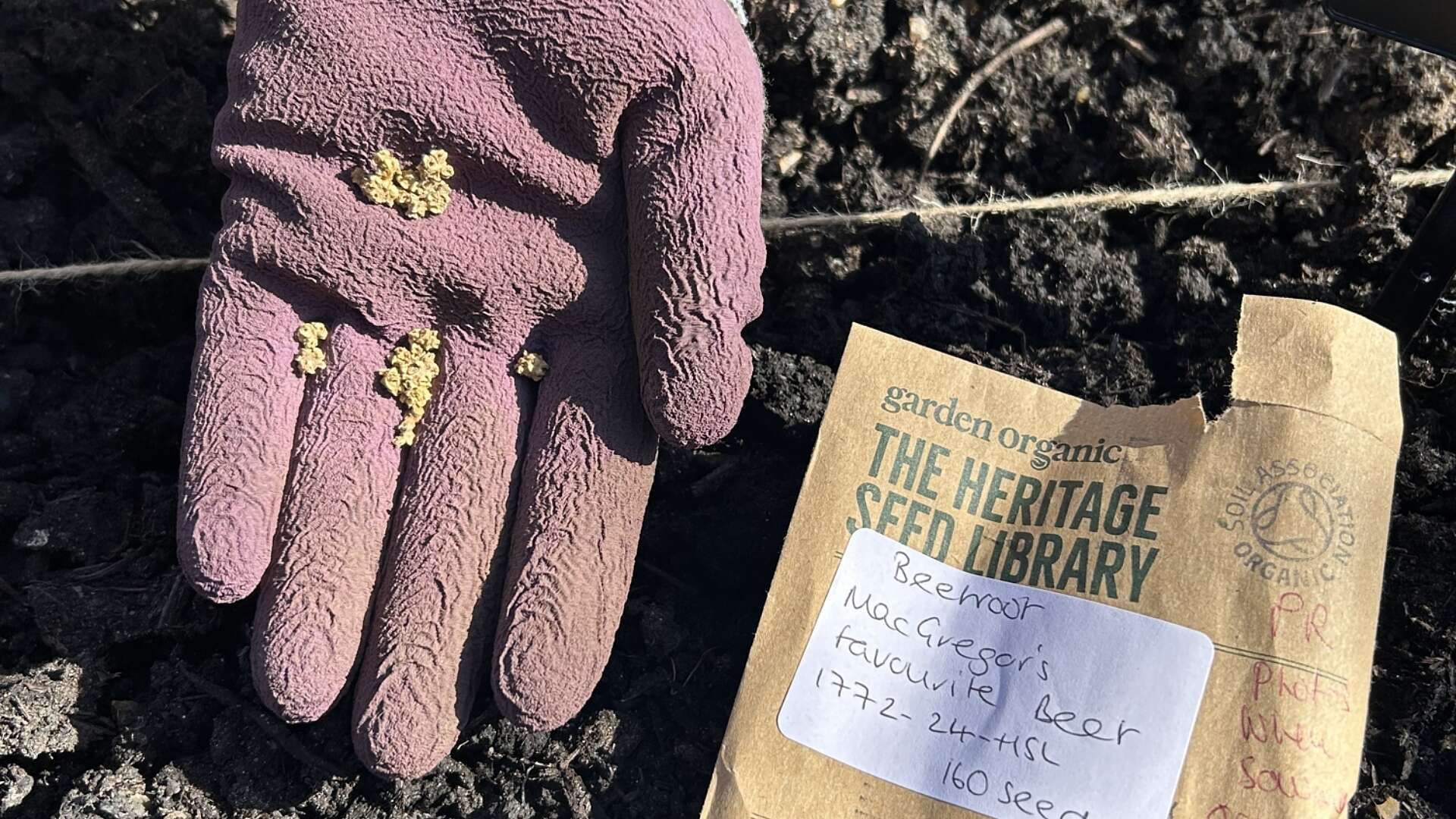Spring garden diary

Changes are afoot in our demonstration garden! Over the winter and early spring, we’ve been beavering away transforming the ornamental beds - making space for a new mix of edibles and ornamental plants.
We want to show it’s not always necessary to have a veg plot or allotment if you want to grow food. Even in a small space it’s easy to intermingle fruit and veg among the flowers.
The benefits are that pollinators will appear in abundance, and you get the best of both worlds with edibles and attractive flowers in one easy to manage space. Another bonus is that the more plants you squeeze in, the fewer weeds you’ll have!
Growing your own varied and nutritious crops can also help guard against disruptions to the food supply (experienced recently during the pandemic). Read more about the impact of food shocks in our president Tim Lang’s blog.
What we’re growing
Now the soil is warming up, seed sowing has begun in earnest. The first vegetable to be sown directly into the mixed bed is a beetroot called ‘MacGregor’s Favourite’, from our Heritage Seed Library.
Traditional veg plots can be labour intensive, with lots of sowing and growing of annual crops each year. As part of our changes, we’re incorporating perennial veg into the plans, which will come back each year - saving time and money.
And we have set aside one patch to grow some more unusual and interesting specimens such as:
- Japanese ginger (Hedychium mioga) The flowers and their buds are enjoyed in Japan for their subtle gingery flavour. It does well in sun or partial shade.
- Bulbous nettle (Laportea bulbifera) A groundcover plant, which will thrive in shade. The leaves can be cooked and used like spinach.
- Salad Burnet (Sanguisorba minor) The slightly cucumber-scented leaves can be sprinkled into salads.
- Korean aster (Doellingeria scabra) Leaves can be sauteed, used raw in salads, or dried and stored for later.
- Coneflower ‘Sochan’ (Rudbeckia laciniata). Once an indigenous American Cherokee staple, the young stems, shoots and leaves can be used until early summer. Try wilting with melted butter.
Come and see all the changes taking place… Our garden open days begin on 12 April 2025 offering you the chance to explore the garden at your leisure. Click here to view the dates and book your place.